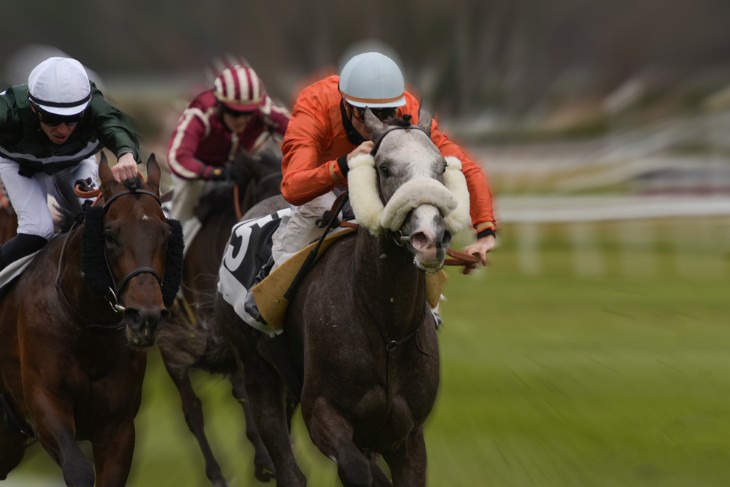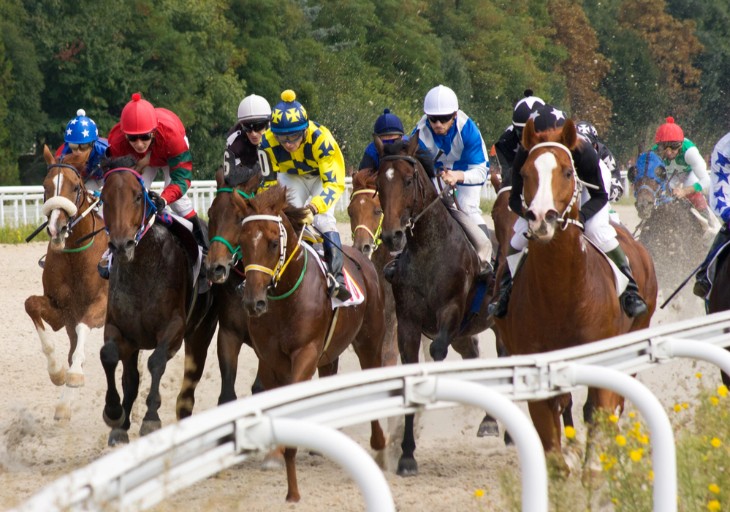- Horse Racing Form Guides
- Decoding the Basics: Key Figures and Abbreviations
- Unravelling Past Performance Figures (PP)
- Understanding Racing Class and Rating (Rtg)
- Grasping Jockey and Trainer Statistics
- Delving into Track and Course Information
- Analysing Distance and Going Preferences
- Making Informed Betting Decisions with Form and Statistics
- Conclusion
Horse Racing Form Guides
Horse racing form guides contain valuable information on a horse's past performances, providing insights into its capabilities and potential for upcoming races. These guides typically list details such as recent races, distances, positions, weights carried, jockeys, and trainers. Additionally, key figures and abbreviations summarise aspects of the horse's racing history.
Form guides allow bettors to comprehend a horse's successes and challenges. By evaluating past race details and performance metrics, one can identify trends and patterns. For example, consecutive wins may indicate good form and consistency. On the other hand, poorer performances could signify struggles with tougher competition or unfavourable conditions.
While form guides present useful data, they require context to interpret appropriately. One must consider factors like race class, distance, surface, and equipment changes. Isolating figures removes vital details that influence performance. An integrated assessment of all details yields the most informed perspective.
- Form guides may also include information on a horse's pedigree, such as the performance of its parents and siblings. This can provide additional insights into the horse's potential capabilities.
- Some form guides quantify speed figures, measuring a horse's pace and finishing speed over recent races. Higher speed figures may indicate greater talent and competitiveness.
- Not all form guides are formatted identically. It is helpful to cross-reference and compare guides to ensure important details are not overlooked.
Decoding the Basics: Key Figures and Abbreviations
Several standard figures and abbreviations seen in form guides offer shorthand references to a horse’s recent performances. PP denotes finishing positions in the last few races. For example, PP figures of 121 indicate a win, second place, and first place finish in the horse's last three races.
The rating provides a benchmark for comparing horses’ talent levels. Professional handicappers synthesise details like race times, lengths behind, and weights carried to calculate these figures. Higher ratings signal greater perceived ability. However, ratings alone do not guarantee future performance.
Jockeys and trainers have statistics summarising their recent win percentages and return on investment. This reveals insights into their expertise and decision-making with particular horses. Consistently high percentages may indicate skills translating to horse success.
- Equipment changes, like blinkers added or removed, can significantly impact a horse's focus and racing manner. Make note of any recent equipment changes listed in the form guide details.
- The going and track condition refers to the racing surface firmness. Horses typically specialise in firm, yielding, soft, or heavy going. Pay attention when surface conditions vary from a horse's preferences.
- Form guides may use colour-coding and visual icons to draw attention to standout statistics, equipment changes, or surface conditions. Use these as visual reference points when evaluating key details.
Unravelling Past Performance Figures (PP)
A horse's past performance figures chronologically list its recent finishing positions over a series of races. This sequence reveals valuable patterns, such as sustained successes at a race distance or track indicating specialisation. Or consecutive poorer performances suggesting struggles with race dynamics or surfaces.
It is essential to balance past performance figures with race variables. Moving to different classes and competition levels, as well as tackling new distances or track configurations, affects most horses. Isolating raw figures from contextual details rarely paints an accurate picture. Integrating past figures with race specifics allows for optimal insights.
PP figures are best used for identifying trends that may translate to upcoming races with similar dynamics. A horse consistently demonstrating competitiveness at a distance on a specific surface has an edge when facing comparable conditions. Figures must not overshadow other factors like riding style changes or fitness between races though. Ongoing assessment is key.
- The number of career starts a horse has is often listed alongside past performance figures. This helps in gauging experience at the professional racing level when interpreting figures.
- Making comparisons between the past performance figures of horses entering the same upcoming race can help in gauging competitiveness. Identify potential frontrunners to set the pace.
- There are diminishing returns in prioritising too many past performances. Typically 8-10 historical races sufficiently establish patterns and trends for betting insights.

Understanding Racing Class and Rating (Rtg)
A horse’s racing class indicates the level of competition it has faced according to designated categories. Class 1 represents elite stakes companies, while Classes 2 and 3 feature ascending talent levels. Racing lower classes signals facing less accomplished runners. Understanding class helps put ratings and figures into perspective.
Ratings quantify talent within a horse’s class group, facilitating comparison. But the meaning of an 80 rating differs tremendously between Class 1 and Class 6 horses as expectations vary. A mid-tier rating in an upper class still signals demonstrated ability to compete with exceptionally fit horses.
Handicappers determine ratings by synthesising race times, competition levels, distances, track conditions, and weights carried. The resulting benchmark strives to represent true talent level. But ratings are still hypothetical projections of future potential, not guarantees.
- Be cautious of drastic short term rating fluctuations race to race, as external factors like equipment, health issues, or rider problems may be influencing them rather than actual ability.
- Ratings spreadsheets are sometimes available listing career summary figures for ease of comparison between horses at a glance.
- Lower rated horses can still defeat highly rated rivals in certain scenarios. Do not dismiss extreme longshot opportunities based solely on ratings differentials.
Grasping Jockey and Trainer Statistics
Jockey statistics highlight the collected expertise guiding the horse in races. High win percentages communicate effective tactical decision-making translating to horse performance. Leading jockeys integrate positioning, pace management, with finishing burst calls to optimise chances.
However, jockey statistics carry nuance requiring careful interpretation as well. Surface specialisation can skew figures, as can specific horse pairings accentuating strengths. Changing mounts, injuries, and competing priorities also influence effectiveness. Integrate statistics with on-track observations of races when possible.
Ultimately, the combination of horse ability with strategic jockey decision-making yields the best results. Trainer effectiveness in preparing horses also plays a role. Evaluate holistically a horse’s connections alongside its figures for the truest sense of betting potential. No one variable exclusively guarantees outcomes due to racing’s inherent variability.
- Jockey weight allowances are sometimes given in certain races requiring minimum weights be carried. This can become an advantage for lighter jockeys allowing horses to carry less weight.
- Apprentice Jockey allowances apply early in some jockeys' careers, allowing extra weight reductions as they gain experience. This can tip close races in their favour.
- While statistics tell part of the story, intangibles like jockey confidence, chemistry with a horse, and tactical growth over time also matter. Experience reveals itself through subtle factors as well.
Delving into Track and Course Information
Horses often show preferences for certain track surfaces, drier dirt over muddy terrain, or firm grass instead of yielding turf. Evaluating past performances on comparable tracks is key for determining suitability to upcoming races. Consecutive subpar efforts when surfaces shift from a horse's preference demand attention.
Different courses also cater toward particular running styles, turn proficiencies, and stamina capabilities over certain distances. A horse lacking turn experience may struggle at venues featuring tight radius turns repeatedly. Statistics should separate performances by course to illuminate preferences.
Isolating stats instead of incorporating contextual details into assessments rarely bears fruit though. For example, a horse may post poor efforts on a surface deemed unfavourable. But new equipment, improved fitness or riding tactics could enable reversing prior difficulties if overlooked.
- Not all dirt or turf tracks ride identically, even within the same course. Their degree of moisture absorption and maintenance approaches varies, constantly impacting composition.
- Horses dropping considerably in class sometimes dominate new competition despite facing unfamiliar tracks or courses. Talent gaps overcome variables.
- Rapidly improving maiden horses often defy track and course statistics altogether. Betting solely on experience misses opportunities on promising upstarts.

Analysing Distance and Going Preferences
Horses possess innate preferences for sprinting short distances or routing longer lengths coded within pedigree and physiology. Sprinters generate exceptional turn of foot with condensed energy, while routers unlock sustained speed via superior respiration. Distance aptitudes dictate race placement strategy.
The going references track surface firmness, ranging from soft to heavy conditions. Horses typically specialise thriving on either firm, good tracks or more yielding to their striding mechanics. Going preferences influence race approach as saft footing shifts to holding speed over navigating safely. Determining ideal conditions is crucial.
However, rival competition, pace dynamics and equipment changes also impact surface and distance STATS as interconnected factors. Isolating just statistical preferences misses contextual insights that explain surges, regressions and anomalies in FORM. Most probabilities possess outliers when secondary variables enter equations. Medical history should incorporate assessment as well.
- Going categorizations vary slightly regionally but generally include: hard, firm, good, soft, heavy and yielding descriptors in ascending moisture content.
- Some rare horses boast exceptional versatility adapting stride, pace and tactics succeeding across surfaces and distances. But most thrive within defined sweet spots.
- Determining whether emerging preferences remain consistent or require regression back to means often proves an inexact science. Projections offer guessing of probability not guarantees.
Making Informed Betting Decisions with Form and Statistics
Informed wagering requires incorporating statistical insights from horse FORM while duly acknowledging its limitations regarding guarantees on probability and outcome projections. By compiling data on preferences, past figures, class, rating, connections etc., one achieves sufficient context for determining potential advantages against a races dynamics and competition being equal. If surface, distance and other preferences align with historical strengths verified through sustained demonstration against comparable fields, a chance exists for continuation form.
But the vast number of interconnected variables influencing results means that while a holistic synthesis better determines probability on paper, surprises always emerge translating statistics onto course RESULTS. Absolute predictions excessively relying upon numbers while subordinating intangible moxie and grit variables defy reality. So balance probability against surprise, and bankroll strategy toward reasonable risk tolerance given each unpredictable opportunity. If the odds warrant speculation on an outcome exceeding its isolated statistics, trust observational assessment of environmental variables. The thrilling uncertainty means anything can happen once the gates open. Thus form offers clues not conclusions on the mysteries within thoroughbred fortune. Let analytical wisdom guide but not override intuitive imagination. For the track continually proves a great equaliser in turning paper into pedestals. And therein lies its enduring magical allure to hearts clinging to hope above all, seeking jackpots beyond reason.
- The best long term results come wagering across sequential races testing insights learned from preceding experiences before adjusting approaches. Careful observation allows capitalising on emerging opportunities.
- Wager proportionally to conviction levels on expected outcomes. Slim probability hunches deserve smaller investments than highly rated contenders matching preferences. But allow budget for speculative outlier chances as well.
- Enjoy the thrill of calculated risk behind choices, independent of actual financial results which cannot spoil the sporting experience of puzzle solving mysteries in the moment. Outcomes may reward or punish, but the journey sustains the spirit as the greatest payoff enriching life’s pursuit of wisdom.
Conclusion
In summary, horse racing form guides contain a wealth of valuable information to help inform betting decisions. Key statistics, figures, abbreviations and details on past performances offer insights into a horse's capabilities and preferences. However, this racing data requires careful analysis in context, considering race variables like competition level, distance, surface and equipment that influence performance. While statistics reveal patterns and trends reflecting probability, the intricate dynamics of races means nothing is guaranteed. An integrated assessment combining data, observational intelligence and intuitive instinct is required to capitalise on opportunities exceeding expectations. So leverage horse form and statistics to understand probability, but wager with reasoned boldness. The thrill of the unpredictable remains horse racing’s alluring and enduring appeal.








